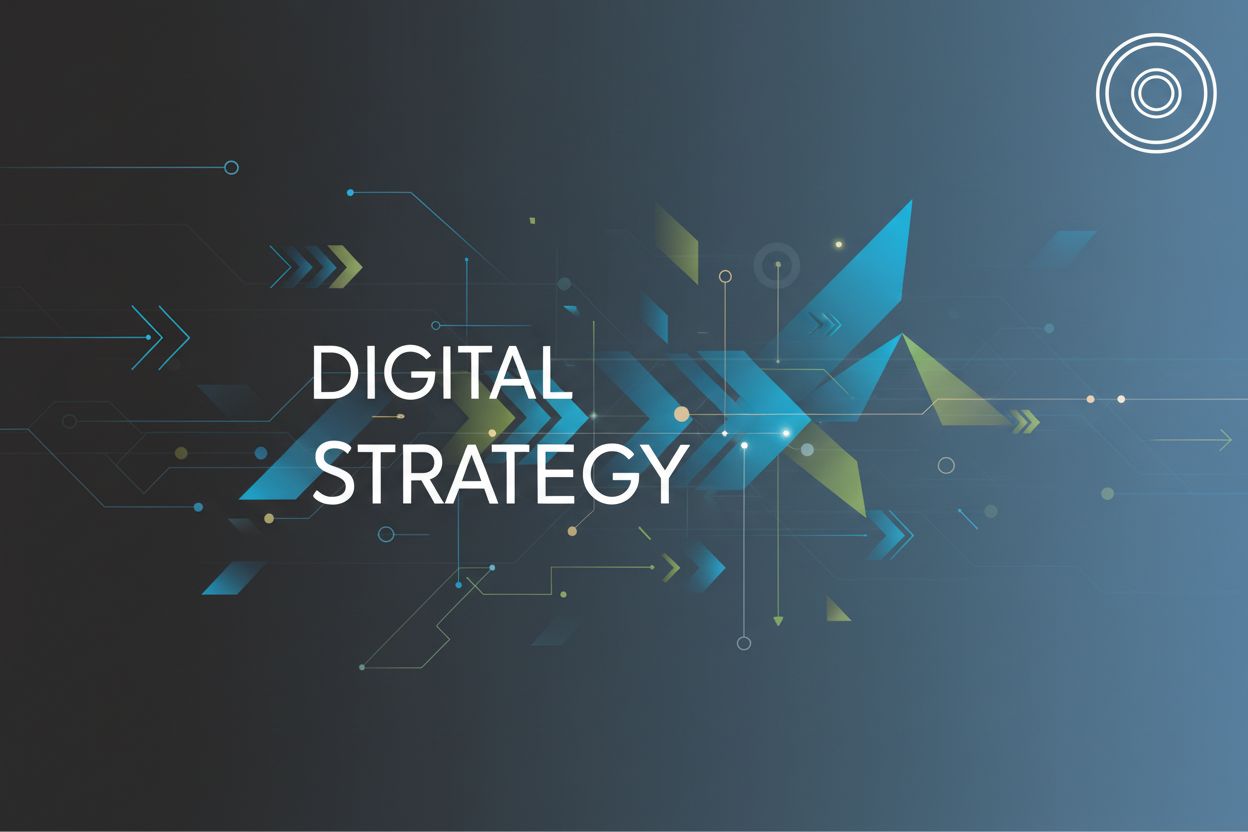Digital Marketing Strategy Frameworks: A Comprehensive Guide
TL;DR
Introduction: Why Frameworks Matter in Today's Digital Landscape
Alright, let's dive into why frameworks are kinda essential in today's digital marketing mess. It's like trying to bake a cake without a recipe, y'know?
Keeps you on track: Think of frameworks as your GPS. There are so many shiny objects online. Without a framework, you can get lost and waste money. Like a retailer who is trying to get into tiktok without understanding if their audience is there.
Adapting to Change: The digital world changes faster than my grandma changes her mind. Frameworks help you adjust your sails. For example, healthcare firms need to quickly change their strategies by providing a structured way to assess new regulations and pivot their communication channels or messaging.
Structure in Chaos: Frameworks bring a bit of order to the chaos. They help you organize your thoughts and actions. Even if you don’t think you need one - you probably do.
In this guide, we're gonna break down what digital marketing strategy frameworks actually are, show you the benefits of using them, give you an overview of some popular options, and tell you how to make them your own.
What are Digital Marketing Strategy Frameworks?
Alright, so you're probably wondering what the big deal is with digital marketing strategy frameworks, right? Well, lemme tell ya – they’re more important than you might think. I mean, you could wing it, but that's like trying to build a house without a blueprint.
Think of a framework as a model that kinda lays out your marketing processes. It's like, "Okay, first we do this, then we do that," y'know? It points out all the crucial spots where you touch base with your customer. This way, you're seeing the whole picture—a true 360-degree view, so nothing falls through the cracks.
- It's all about having clear objectives. Like, what are you actually trying to achieve? Are you aiming for more sales, or just trying to get your name out there?
- You gotta know your target audience inside and out. Who are these people? What makes them tick? What are their pain points?
- Choosing the right channels is key. Are you gonna hit 'em up on social media? Maybe email marketing is more your style? Or do you need to invest in content marketing?
- And of course, you gotta measure and analyze everything. Are your campaigns actually working? Are you getting a good return on your investment? If not, what needs to change?
Honestly, without a framework, you're just kinda throwing stuff at the wall and hoping it sticks. Frameworks give you clarity, help you prioritize, and let you actually measure what you're doing.
According to Wrike, nearly 40% of marketers don't think their digital marketing strategy is effective because of a lack of planning.
So yeah, frameworks are pretty darn important.
So, now that we know what a digital marketing strategy framework is, let's take a look at the core components that make it effective.
Benefits of Using Digital Marketing Frameworks
You know, it's kinda funny how many people jump into digital marketing without a solid plan. It's like setting sail without a map – you might get somewhere cool, but chances are you'll just end up lost at sea. So, let's talk frameworks, shall we?
Digital marketing strategy frameworks are kinda like the blueprints of your online campaigns. They offer a structured way to approach the often-chaotic world of digital marketing. Instead of randomly throwing spaghetti at the wall, hoping something sticks, a framework helps you prioritize tasks, allocate resources, and measure results.
Here's why they're so beneficial:
- Clarity and Focus: They cut through the noise, helping you identify what truly matters and where to direct your energy and budget.
- Efficiency: By providing a roadmap, frameworks prevent wasted effort on ineffective tactics. You know what to do, when to do it, and why.
- Measurable Results: Most frameworks incorporate elements of tracking and analysis, allowing you to see what's working and what's not, so you can optimize your campaigns.
- Adaptability: While providing structure, good frameworks also build in flexibility, allowing you to pivot when market conditions or customer needs change.
- Alignment: They ensure everyone on your team is on the same page, working towards common goals.
Honestly, that's kinda wild.
The key is to choose a framework that fits your business goals and resources. No framework is a one-size-fits-all solution. You might even combine elements from different frameworks to create a customized approach.
Now that we've looked at the benefits, let's explore some popular frameworks.
Popular Digital Marketing Strategy Frameworks: A Detailed Look
Let's talk frameworks, shall we?
Digital marketing strategy frameworks are kinda like the blueprints of your online campaigns. They offer a structured way to approach the often-chaotic world of digital marketing. Instead of randomly throwing spaghetti at the wall, hoping something sticks, a framework helps you prioritize tasks, allocate resources, and measure results.
RACE Planning Framework: This one's all about sales growth. It focuses on Reach, Act, Convert, and Engage. For example, a retailer would use "Reach" to increase brand awareness through social media, then use "Act" to encourage website visits, "Convert" to turn visitors into buyers, and "Engage" to build customer loyalty.
SWOT Analysis: This framework looks at your Strengths, Weaknesses, Opportunities, and Threats. This is really useful for setting goals and making strategic decisions. A healthcare company, for instance, might identify its strong brand reputation (Strength), outdated technology (Weakness), growing demand for telehealth (Opportunity), and increasing cybersecurity threats (Threat).
Porter's Five Forces: This one dives deep into industry competition. It analyzes the threat of new entrants, the bargaining power of suppliers and buyers, the threat of substitute products, and the rivalry among existing competitors. Like, a streaming service would use this to assess how easily new competitors can enter the market, how much power content creators (suppliers) have, and how intense the competition is with other streaming platforms. Understanding these forces helps a streaming service decide where to invest its marketing budget – for example, if supplier power is high, they might focus marketing on exclusive content to differentiate.
SOSTAC Model: This is a structured approach to planning. It stands for Situation, Objectives, Strategy, Tactics, Actions, and Control. A finance firm might start with a "Situation" analysis of the current market, set "Objectives" like increasing online applications, develop a "Strategy" for content marketing, use "Tactics" like blog posts and webinars, take "Actions" to create and promote content, and "Control" the results by tracking application rates.
5S’s Framework: Sell, Serve, Speak, Save, Sizzle. This framework is great for setting goals related to customer interaction and business growth.
- Sell: Focuses on driving sales and revenue.
- Serve: Emphasizes providing excellent customer service and support.
- Speak: Encourages two-way communication with customers.
- Save: Aims to reduce costs and increase efficiency.
- Sizzle: Relates to building brand excitement and loyalty.
STP (Segmentation, Targeting, Positioning): This framework is crucial for understanding your market.
- Segmentation: Dividing your broad market into smaller, more manageable groups with similar needs or characteristics.
- Targeting: Choosing which of these segments to focus your marketing efforts on.
- Positioning: Deciding how you want your brand or product to be perceived by your target audience relative to competitors.
So, how do these frameworks work in the real world? Well, imagine a small business owner trying to boost their online presence. They might start with a SWOT analysis to understand their strengths and weaknesses, then use the RACE framework to plan specific actions for reaching, engaging, converting, and retaining customers.
Or, take a look at Gentech Marketing, they suggest selecting a marketing model that suits your business goals and campaign. That's solid advice.
A 2023 report from Smart Insights revealed that almost half of businesses (47%) still don't have a planned digital marketing strategy.
The key is to choose a framework that fits your business goals and resources. No framework is a one-size-fits-all solution. You might even combine elements from different frameworks to create a customized approach.
Now that we've looked at some popular frameworks, let's explore how to implement them effectively.
Implementing Digital Marketing Frameworks: A Practical Guide
Implementing digital marketing frameworks? Sounds intimidating, right? It doesn't have to be. Think of it as finally organizing that junk drawer—you might find some real treasures in there.
First off, conduct a situational analysis. I know, sounds like business jargon, but really, it's just figuring out where you are. Use a SWOT analysis to get real about your strengths, weaknesses, opportunities, and threats. Gotta be honest here, otherwise, what's the point? Then, set SMART objectives: Specific, Measurable, Achievable, Relevant, and Time-bound. "Increase website traffic" is not a smart objective. "Increase website traffic by 20% in Q3" is.
A digital marketing strategy framework helps develop an effective marketing plan. Nearly 40% of marketers do not think their digital marketing strategy is effective - Smart Insights
Next up, develop a strategy. Choose a framework that makes sense for your goals, like the RACE framework, which we touched on earlier. It’s all about Reach, Act, Convert, and Engage. Got it? Good. Or, if you're looking to understand your market deeply, the STP framework is a good place to start.
Now, implement your strategy across channels. Don't just pick one channel and hope for the best. Spread the love—social media, email, content.
Finally, and this is key, monitor progress. Use those kpis (key performance indicators) to see what's working and what's not. Then, evaluate and adjust. The digital world changes fast, so your strategy needs to be flexible.
Think of It like This:
A local bakery wants to boost online orders. They start with a SWOT analysis, realizing their strength is their delicious products, but their weakness is their outdated website. Their SMART objective? Increase online orders by 15% in the next quarter. They use the RACE framework, focusing on reaching local foodies through targeted Facebook ads, getting them to act by visiting the website, converting them with easy online ordering, and engaging them with a loyalty program. They track website traffic, conversion rates, and customer retention, adjusting their ads and promotions based on the data. It's not rocket science, people.
Okay, so you've got the basics down. But how do you make these frameworks your own? Let's dive into tailoring them to fit your business.
Case Studies: Real-World Examples of Framework Implementation
Alright, so you're probably thinking, "Okay, frameworks are cool and all, but do they actually work?" Let's get into some real-world examples to see how companies are using these things to get results.
Imagine an e-commerce business struggling to turn website visitors into paying customers. By implementing the RACE framework, they focused on each stage to optimize their customer journey.
- For Reach, they boosted their social media presence with targeted ads and influencer collaborations.
- To encourage Action, they revamped their website with clear calls-to-action and user-friendly navigation.
- They improved their Convert rates by streamlining the checkout process and offering personalized discounts.
- Finally, they focused on Engagement by creating a loyalty program and actively responding to customer feedback.
The result? Increased sales and improved customer retention. Not bad, right?
A startup, before diving headfirst into the market, conducted a SWOT analysis to get a clear picture of where they stood.
- They identified their Strengths, like their innovative product and passionate team.
- Weaknesses included limited funding and lack of brand recognition.
- Opportunities arose from a growing market demand and untapped customer segments.
- They recognized Threats, such as established competitors and potential regulatory changes.
Based on these findings, they developed strategies to leverage their strengths, mitigate their weaknesses, capitalize on opportunities, and defend against threats. For example, they secured seed funding to address their financial limitations. The impact was significant: a successful launch and sustainable growth.
A B2B software company wanted to understand its competitive landscape better. They used Porter's Five Forces to analyze the industry. They realized the threat of new entrants was moderate, but the bargaining power of buyers was high due to many similar solutions. This insight led them to invest more in customer service and unique feature development to differentiate themselves and reduce buyer churn.
According to Smart Insights, almost half of businesses don't have a planned digital marketing strategy.
So, as we've seen, frameworks aren't just fancy diagrams – they're practical tools that can drive real results. Next up, we'll dive into how to customize these frameworks to fit your specific business needs.
Conclusion: Choosing the Right Framework for Your Digital Marketing Success
Okay, so you've been wading through frameworks, models, and acronyms, huh? It can feel like alphabet soup, honestly.
- Frameworks offer structure: They bring order to the digital marketing chaos. They helps you prioritize, allocate resources, and measure results.
- The right choice depends on your goals, resources, and business. A small business might lean on STP (segmentation, targeting, positioning), while a larger company in a competitive market might use Porter’s Five Forces.
- Implementation is key: You gotta put the framework into action and monitoring those kpis.
Remember, the digital landscape is always shifting. Choose a framework that fits, but also be ready to adjust as things change. As almost half of businesses still don't have a planned digital marketing strategy, make sure you're not one of them!




